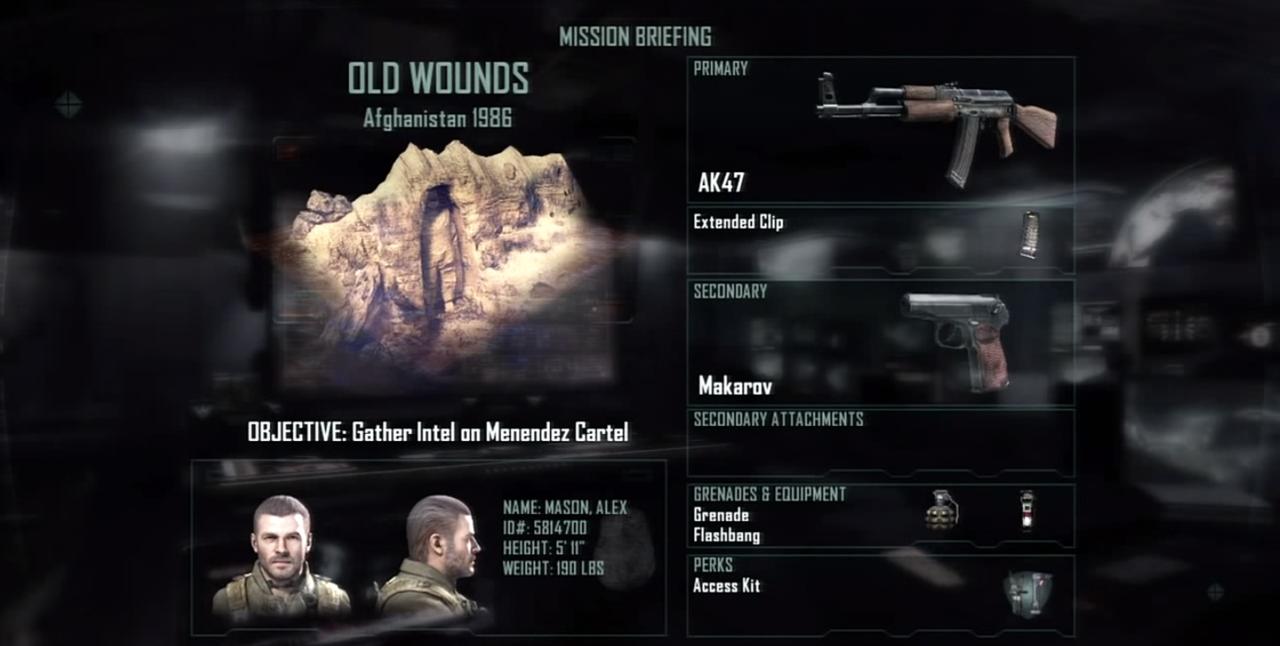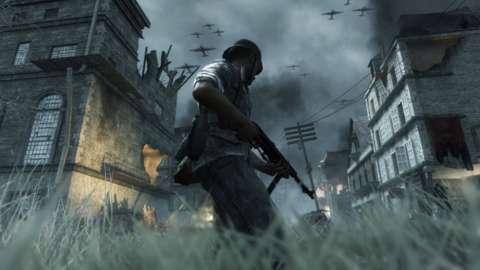I'll be honest, I miss World War II shooters. Some of my favorite gaming memories came from Medal of Honor and early Call of Duty games. Few scenes inspired awe more than storming the beaches at Normandy or sneaking through the jungles of Guadalcanal.
When I was young, I was obsessed with military history. I'd read as many books about war as I could get my hands on, learning about how conflicts unfolded and how countries battled. Playing a WWII game gave me the chance to, in a sense, witness these wars first-hand. I played these games to see into the time period in a way that even films can't really capture. There's nothing as striking as actually taking control of a soldier landing on the beaches during the D-Day invasions. It lets you understand those battles from a first-person perspective, something that no books or films can truly replicate.
But, after years of consistent releases, WWII shooters seemed to just fall away. An oversaturated market compelled game developers to move to other time periods, pretty much leaving historical settings behind.

And instead shooters have moved toward the future. Call of Duty 4: Modern Warfare marked a turning point. Since then, most shooters have focused on bleeding-edge technology and the allure of the futuristic. Titanfall pushed things even further from the present, motivating recent FPS games to include extremely fast, augmented movement. The character you take control of in Advanced Warfare or Black Ops III is not so much a soldier as a hyper-lethal cyborg.
It's been almost 7 years since Call of Duty last took place during World War II. In that time, a lot has changed. Games have improved dramatically, both graphically and in terms of gameplay. There's a new generation of consoles, new game engines, and new game design tools.
Several games have been released in the past few years that take place during the war, such as Company of Heroes 2 and the Sniper Elite series. But recent World War II strategy and action games do not portray the war quite like the old AAA shooters did. Sniper Elite is a lone-wolf sniping game without battles; in Company of Heroes you use soldiers like chess pieces to strategically win each level. But very few games have taken on the war from a soldier's perspective since Call of Duty: World at War and Medal of Honor: Airborne.
Because of this, it's time for shooters to move back into the past. Developers of AAA shooters should make games set in World War II once again. Games have moved far enough into the future. It's time for another journey through WWII.
A game now would look much different than past shooters set during World War II. Game design has come a long way since the middle of the 2000s, and new design trends have greatly increased immersion and realism in games. These new features are why developers should make World War II shooters again.
Player customization
One of the main trends in game design over the past five years has been an increasing focus on player customization. But past World War II shooters didn't really have this. Instead, they generally let you play as infantry grunts with stock weapons and gear, with specific tasks to complete. There wasn't much flexibility in these games. You were generally stuck assuming a single role, unable to personalize.
A new shooter in the current era would almost certainly have more options. You'd likely be given the choice of different classes to play as. It might include a machine gunner class for those who like to cart around lots of firepower. Or for those who prefer a support role, it could let players assume the role of medic. Players who want to take a more specialized approach to a battle could wield a flamethrower.

Perhaps you'd even be given a choice of certain gear to bring and prioritize, like allowing you to carry an additional Bangalore torpedo instead of a frag grenade, or another med pack instead of a knife.
Developers of first-person shooters have also begun to give players greater control over the appearance of their characters, letting them personalize even further. Although Allied soldiers generally had little flexibility with what they could wear or how they could look, they all had some personal flair to differentiate themselves. Although the restrictions of the military during WWII preclude full customization, a new game might let players write messages on their characters' helmets, or choose which personal items to bring on a mission. Little touches like that would go a long way toward making the characters feel more human and believable.
More personal, branching narrative
Since World at War launched, branching storylines have grown more common, defining the Telltale Games series, the Mass Effect trilogy, and even Treyarch's own Call of Duty: Black Ops II. It's not uncommon now for developers to incorporate player choice in stories.
A WWII shooter, then, could include a story that evolves with your decisions, responding to your actions and giving you an experience different than other players'. The war exists in history as a massive canvas of countless different tales of valiance, camaraderie, and tragedy. Although the general outline of the events of the war must stay constant, there is space for very different stories to be told.
The TV series Band of Brothers, for instance, used the nonfictional framework of the experiences of one U.S. squad and told several different self-contained, moving, and fictional stories about them. Even Brothers in Arms: Hell's Highway, released in 2008, featured a story more personal than many other World War II shooters. It focused on the relationships between soldiers and not as much on the events of the war itself. It was linear, but it still told a compelling story.
Player choice could take this even further in games, letting players create stories through decisions that affect the game's narrative. One of the problems any linear shooter has is how to make players feel that they are a part of the events in the game, rather than just spectators to things happening around them. Giving players the options to be gruff toward an officer, share food with a friend, or pull a comrade out of the line of fire all would give them a greater stake in the game. It would let you personalize your story as a soldier in this war.
Elements of strategy and greater autonomy during missions.
Over the years, linear shooters have slowly started to give way to more open, sandbox-style games. In the Crysis series, for example, enemy encounters often give you the choice of playing stealthily or shooting everything in sight. In Far Cry 3 and 4, you have a handful of options in how to approach every enemy base.

Imagine a World War II shooter with that kind of openness. You and your unit walk up to an occupied French village. An airstrike is available, although it will level most of the town and you don't know where the enemy is entrenched. You can run out into the middle of the street, giving you an option to use more heavy weaponry but also leaving you more exposed. But your squad chooses to enter each house one by one, quietly. You sneak up on enemy positions, listening for movement and looking for signs of activity. Then, your squad can either spread out through the whole house--giving you the option of blowing a floor--or it can stick together, slowly clearing rooms.
These tactical decisions plagued officers and commanders during the war, and each Allied attack of occupied villages was different than the last. Giving players opportunities to decide how they wish to approach situations would make the game far more engaging than World War II shooters of the past.
A story that addresses some darker and more serious themes and events.
The hardest part of making another WWII game would be addressing the horrifying events that took place during the war. How do you tell the story of the worst war in human history without discussing the atrocities that happened during it?
We've had WWII shooters that showcased the epic, setpiece moments of the war. But soldiers who fought during it confronted some of the worst parts of humanity. They liberated prison camps, saw massacres, and watched as cities burned to the ground. A true representation of the war would not shy away from what actually happened from 1939-1945.
But this isn't necessarily a problem. This is an opportunity to tell an impactful, moving, and important story. The events of World War II should be explored in game form. Playing a game is not the same as reading a book or watching a film. Games set during World War II are often more intimate and more striking than WWII movies or books. Instead of watching events happen passively, in a WWII game, you control the soldier storming the beaches at Normandy, walking through bombed-out cities, and fighting inch-by-inch for territory.

I remember when I first watched Saving Private Ryan. Everything I had read about suddenly made sense to me. I finally understood that these events actually happened. Millions of people died during this war. Homes were destroyed and fields burned. Crawling up the beaches during the D-Day invasions was downright terrifying.
There's no reason why a game couldn't achieve the same effect.
Recently, more games have tackled the dark realities of war. For example, Spec Ops: The Line presented players with the psychological horrors of combat. Players confront massacred civilians and must use chemical weapons on enemies. This War of Mine, on the other hand, tasks players with surviving as a civilian in a city under siege. You have to make decisions about who to send out into the city, who to save, and which scarce resources to prioritize. Games have started to move away from epic, bombastic representations of war, instead portraying the gritty, harsh experiences of soldiers and civilians.
And that's why it's time for a new World War II shooter. We need another one to show the human side of that war--the brutal combat and individual stories. Tear away all the tech and you're left with people battling against each other, endangering their lives for causes they don't necessarily agree with. The advantage of a historical setting is that it can better capture the truths of war than any other media.
It's time for a new World War II shooter because developers now have the ability to make a more impactful, more engaging, and truer depiction of the war than ever before.

